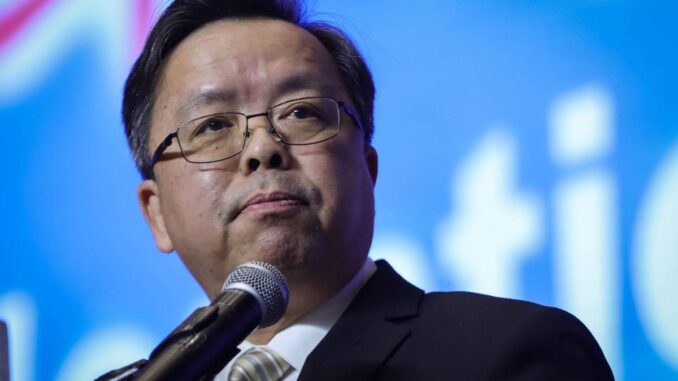
CHINESE Ambassador to the Philippines Huang Xilian has proposed developing an urban complex covering the provinces around Manila Bay, similar to the Greater Bay Area (GBA) in the Chinese region, the Federation of Filipino-Chinese Chamber of Commerce and Industry Inc. (FFCCCII) said.
FFCCCII Chairman Cecilio Pedro said on Wednesday that Huang made the proposal as he saw development potential, specifically in the Manila Bay area.
“We’re [planning a link up] between Bataan and Cavite. So in between is Greater Manila and Bulacan. [The ambassador] just said that he’s also talking about it. Because Huang Xilian said, ‘Why don’t you put up a Greater Bay Area?’ Which is good,” Pedro told reporters on the sidelines of the 12th Manila Forum for China-Philippines Relations.
The proposal to establish a Greater Manila Bay Area (GMBA) was made to replicate the Greater Bay Area covering the regions of Guangdong, Hong Kong, and Macao.
Pedro said he sees no problem with having both the GMBA and the Luzon Economic Corridor supported by the United States and Japan.
He added that having multiple economic development initiatives will be beneficial to the Philippines. “The more the merrier,” the FFCCCII official said.
Raul Lambino, chairman of the Association for Philippine-China Understanding, added that creating a counterpart of the GBA in the Philippines would provide better connections among growth centers in Luzon.
“I think our legislators, congressmen, and senators would agree that indeed we have to do something. We are now going to create the longest bridge that will connect Bataan, Manila, and Cavite,” Lambino said during a panel discussion.
“If we can also create a bridge now that will connect Bataan, Cavite, and Manila upon the financing of China’s government, then we are going to have a vibrant greater Metro Manila, Zambales, Bataan, Cavite area. I think that’s generally better,” he continued.
The Board of Investments, meanwhile, encouraged Filipino businesses to tap into the potential opportunities of the GBA, especially within the industries of financial services, information technology, and manufacturing.
“I think we can find complementarities and synergies in the areas of technology innovation. GBA is global health and technological development, and this perfectly aligns with the Philippines’ expanding its IT-BPM (information technology-business process management) sector, representing mutual growth opportunities,” BoI Executive Director Evariste Cagatan said.
She also cited various opportunities for the financial service industry given Hong Kong’s status as a global financial hub.
Huang emphasized that in 2022 alone, trade between the GBA and Southeast Asian countries reached $1.4 trillion, or 22.6 percent of the total foreign trade of the GBA.


Be the first to comment